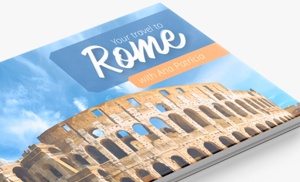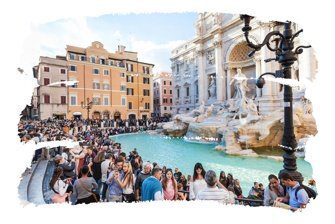Restaurants for celiacs in Italy
Finding gluten-free restaurants in Italy may seem like a challenge, but the culinary experience doesn’t have to be limited. In recent years, this reality has completely changed: there are great options for those who cannot eat gluten, and many specialized restaurants with a special menu. In this post, I will give you several tips on how to get the most out of Italian cuisine without leaving a gluten-free diet! Let’s go to our post today: Restaurants for celiacs in Italy. Stay with us and make the most of boot country! Here at Traveling to Italy, you can make the trip of your dreams come true!! Also, check out our Accommodation in Italy – Tips for your Vacations Section!
Why Choose Gluten-Free Restaurants in Italy?
Whether you follow a gluten-free diet due to sensitivity, celiac disease, or lifestyle choice, Italy offers a rich variety of options without sacrificing taste. Enjoying gluten-free Italian cuisine is possible and delicious. Click here and get to know our Section: Food in Italy!
How to Find Gluten-Free Restaurants in Italy:
- Specialized Apps: Utilize apps that specialize in travel and gastronomy, such as “Find Me Gluten Free” or “AIC Mobile (Italian Celiac Association).” These platforms offer reviews, recommendations, and even the exact location of gluten-free restaurants throughout Italy.
- See Specific Locations: Major cities, such as Rome, Milan, and Florence, have many gluten-free restaurants. Research ahead of time and compile a list of options near the locations you plan to visit.
- Ask for Local Recommendations: Nothing beats local recommendations. When you arrive at your accommodation, ask the locals, hotel staff, or tour guides about top-rated gluten-free restaurants in the area.
What to Try in Gluten-Free Restaurants:
- Gluten-Free Pizza: Try authentic gluten-free Italian pizza; many establishments offer a variety of flavors and toppings to satisfy your taste buds.
- Alternative Pasta: Discover gluten-free pasta made with local ingredients, providing an authentic and safe cooking experience.
- Gluten-Free Italian Desserts: Indulge in traditional desserts, such as tiramisu or panna cotta, in gluten-free versions that preserve the original sweetness.
Gluten, a protein found in cereals such as wheat, barley, and rye, has become a hot topic in recent years. Some people choose to avoid gluten due to specific medical conditions, while others pursue a healthier lifestyle. Let’s explore who can’t eat gluten and the reasons behind this decision. Also, read our Special Post How to Plan a Trip to Italy?
Why can’t some people eat gluten?
Some people CANNOT consume gluten for health reasons, so many others have chosen not to consume gluten for personal reasons. Be that as it may, below we explain a little better what gluten is and why there are people who cannot consume it.
What is Gluten?
Gluten is a complex protein found in grains such as wheat, rye, and barley. It consists of two main proteins: gliadin and glutenin. This combination of proteins gives gluten its elastic structure, which is responsible for giving consistency and texture to many baked goods.
Where do we find gluten?
- Wheat: it is the main source of gluten. Bread, pasta, cakes, and cookies often contain wheat and gluten.
- Rye: Rye products, such as rye breads, contain gluten.
- Barley: Beers and some cereals may also contain gluten due to the presence of barley.
- Spelt: An ancient form of wheat, spelt, also contains gluten.
- Oats: Naturally, oats are gluten-free, but they can be contaminated during processing. Therefore, it is important to choose certified gluten-free oats if necessary.
Who can’t consume gluten?
- Celiac disease: For those with celiac disease, gluten triggers a damaging immune response to the small intestine, leading to damage and improper nutrient absorption.
- Non-Celiac Gluten Sensitivity (NCGS): Some people experience symptoms similar to those of celiac disease, such as bloating and fatigue, without having the condition. This is known as Non-Celiac Gluten Sensitivity.
- Wheat Allergy: Other people may have a wheat allergy, which involves an allergic response of the immune system to the proteins present in wheat, including gluten.
Symptoms of Gluten Intolerance
Symptoms of gluten intolerance can vary, but generally include:
- Gastrointestinal disorders, such as abdominal pain and diarrhea.
- Persistent fatigue.
- Recurrent headaches.
- Skin problems, such as eczema.
What Causes Gluten Intolerance?
- Genetics: Celiac disease has a genetic predisposition; that is, it can be inherited from family members.
- Environmental Factors: Some events, such as viral infections, can trigger celiac disease in genetically susceptible people.
- Immune Response: In celiac disease, the immune system overreacts to gluten, causing damage to the small intestine.
Gluten-Free Alternatives:
Yes! As we said at the beginning of our post, there are currently numerous options for those who cannot consume gluten, both in restaurants and on supermarket shelves. There are several delicious and nutritious alternatives for those who cannot consume gluten. Here are some options:
Gluten-free flours:
- Rice flour.
- Almond flour.
- Coconut flour.
- Chickpea flour.
- Quinoa flour.
Gluten-Free Cereals and Grains:
- Quinoa.
- Corn.
- Rice (brown, basmati, wild).
- Certified gluten-free oats.
Bread and Baked Goods:
- Gluten-free bread (based on alternative flour).
- Gluten-free cakes and biscuits.
- Corn tortillas.
Alternative Pasta:
- Rice noodles.
- Corn pasta.
- Quinoa pasta.
Gluten-free oats:
- Certified gluten-free oats are an excellent choice for cereals and oat recipes.
Snacks and Snacks:
- Fresh and dried fruits.
- Nuts and seeds.
- Popcorn.
Proteins and Legumes:
- Lean meats.
- Fish and seafood.
- Eggs.
- Fresh and cooked vegetables.
Dairy Products and Alternatives:
- Plain yogurt.
- Cheeses.
- Lactose-free milk or plant-based milk (such as almond, soy, or coconut milk).
Ready-to-eat snacks:
- Gluten-free cereal bars.
- Corn or rice snacks.
Gluten-free desserts:
- Ice cream.
- Fresh fruit.
- Specific gluten-free desserts, such as brownies or cakes,.
It is important to read product labels to ensure they are gluten-free, especially for processed foods. In NON-specialized hotels and restaurants, when in doubt, ask an employee, alright?
Watch this video and learn: What is the average cost of a day in Italy?
Subscribe to our channel and receive more video tips about Italy. Don’t forget to give this video a thumbs-up! 😉
TRAVEL TO ROME!

“Your Travel to Rome” is the quintessential e-book for your travel to one of the finest tourist destinations on the planet!
LEARN MORE
Conclusion
Where to stay on Lake Garda? Lake Garda is a natural jewel that captivates visitors with its stunning beauty! This natural wonder is a testament to Italy’s richness in terms of landscapes and experiences, making it an unmissable destination for travelers from all over the world!
Do you feel unsafe traveling?
If you need help organizing your trip, do not hesitate to contact me! I would love to help you make your dream trip to Italy.
Still in doubt? Be sure to post your questions below, or just send me a message, and I will answer you as soon as possible!
An Extra Help for your Trip
The best content from Your Travel to Italy!
Learn more about our tours in Italy right now!
- What to visit in Italy in 10 days?
- The ten must-see places in Tuscany?
- The best tips to save on your trip to Italy?
- What are the 10 most visited cities in southern Italy?
- Airports in Italy? How to get to your hotel? (Venice, Milan, Rome, Florence)
- What to do in 1/2/3/4 days in the main Italian cities?
- The best tips on food in Italy (wines, typical food, enogastronomy tours)
- How to get from Fiumicino Airport to Rome downtown?
- Your Travel to Italy: 10 tips for traveling through Italy!
Best regards from Italy

 PLACES TO STAY IN ITALY
PLACES TO STAY IN ITALY


 Save money!
Save money!